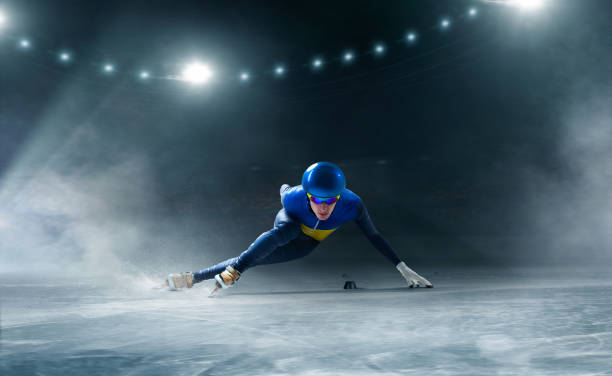Trailblazing the Ice: The Intricacies and Innovations of Speed Skating
Speed skating, a fascinating and fast-paced sport, has evolved remarkably over the years. This high-intensity sport has witnessed numerous transformations and innovations that have significantly shaped its current form. This article delves into the world of speed skating, examining its history, current trends, and performance strategies.

A Journey Through Time: The Fascinating History of Speed Skating
Tracing back to the frozen canals of the Netherlands in the 13th century, speed skating has a rich history. It evolved from a means of transportation across frozen surfaces to a competitive sport. The first recorded speed skating race took place in England in 1763. The sport gained international recognition when it featured in the inaugural Winter Olympics in 1924. Since then, speed skating has grown in popularity and participation worldwide.
Breaking the Ice: Current Trends in Speed Skating
In the realm of speed skating, technology has been a game-changer. From advancements in skate design to the use of specialized training equipment, the sport has been revolutionized. Aerodynamic suits and the innovative clap skate, which allows the blade to remain in contact with the ice longer for increased speed, are the latest trends shaping this sport.
Another trend is the rise of indoor skating. Unlike traditional outdoor skating, indoor venues offer controlled environmental conditions, leading to faster times and more consistent performances.
Skating to Victory: Performance Strategies in Speed Skating
The essence of speed skating lies in the perfect balance of power and technique. Effective training programs focus on improving aerobic and anaerobic capacity, strength, and agility. Additionally, mastering the technique of maintaining a low posture to reduce wind resistance is a crucial strategy.
However, these training regimes come with their challenges. Maintaining optimal physical conditioning throughout the season is a balancing act. Skaters also face the risk of overtraining and injuries.
Backed by Research: The Science Behind Speed Skating
The sport of speed skating is backed by extensive scientific research. Studies have shown that factors like skate blade length, body posture, and stride frequency significantly impact performance.
Moreover, research underlines the importance of mental conditioning in speed skating. Athletes’ psychological readiness, including their ability to handle stress, focus, and maintain a positive mindset, plays a key role in their performance.
An Exciting Ride: The Future of Speed Skating
As speed skating continues to evolve, athletes and coaches are always looking for ways to push the boundaries. The future of the sport promises more technological advancements, innovative training methodologies, and potentially new formats and categories of competition.
Speed skating is a captivating blend of speed, skill, and strategy. It’s more than just a race on ice; it’s a testament to human endurance, technological innovation, and the pursuit of excellence. As we continue to follow its evolution, one thing is clear: the future of speed skating is as exciting as the sport itself.





